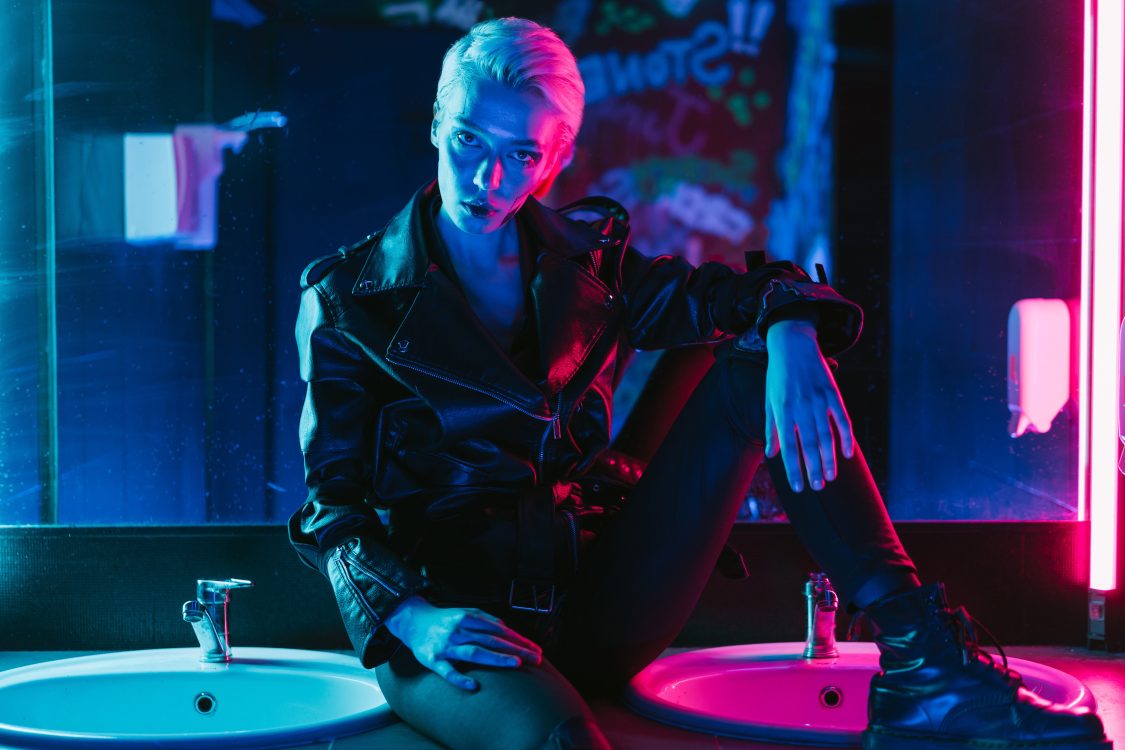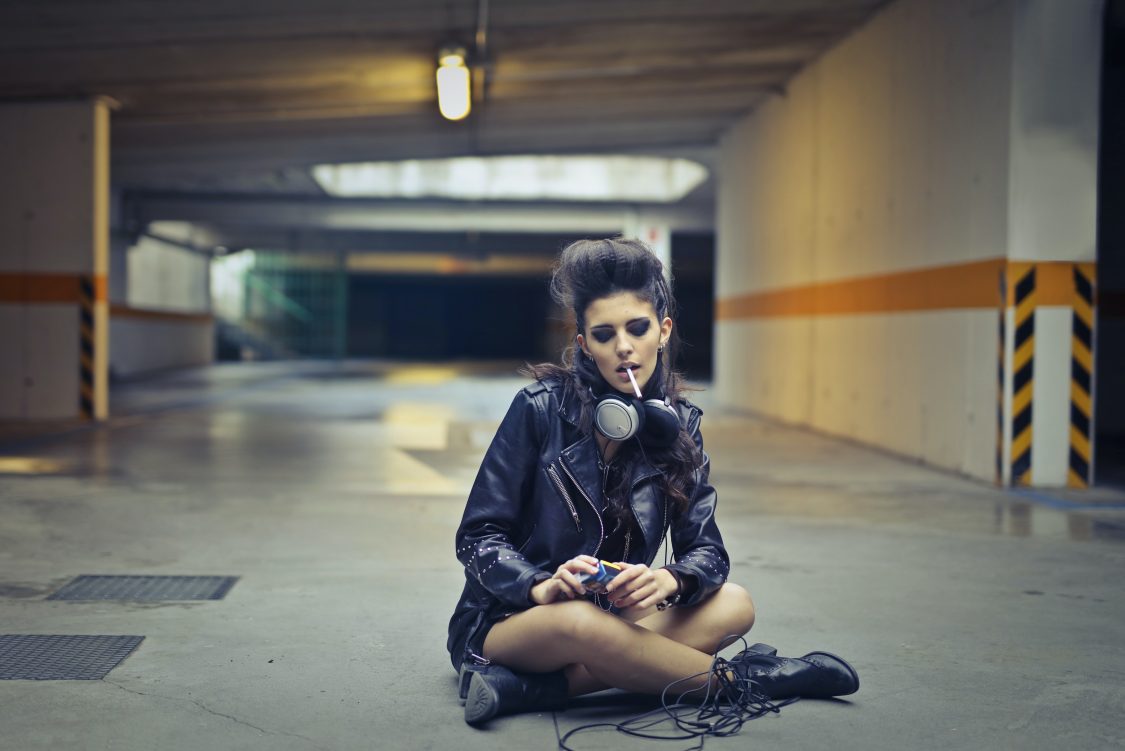Fashion Inspired
Punk Inspired Fashion: How Mainstream Brands are Taking Inspiration from Punk Culture

Definition of punk culture and fashion
Punk culture is a complex and multifaceted phenomenon that emerged in the mid-1970s and has since influenced everything from music and art to politics and fashion. At its core, punk is a movement that values individuality, nonconformity, and a DIY ethic. Punk music, which is characterized by its fast, aggressive sound and often political lyrics, played a central role in the development of punk culture. But punk is also about a way of life and a set of values, including a rejection of mainstream culture and a commitment to social and political activism. In this article, we’ll delve into the definition of punk culture, including its origins, key elements, and evolution over time.
Overview of the influence of punk on mainstream fashion
Punk fashion, with its bold and often unconventional style, has had a significant influence on mainstream fashion over the years. From the early days of punk in the 1970s, when bands like the Sex Pistols and the Ramones popularized the use of leather jackets, studs, and graphic t-shirts, to more recent trends like grunge and emo, punk has consistently left its mark on mainstream fashion.
One of the key ways that punk has influenced mainstream fashion is through the incorporation of punk-inspired elements into mainstream clothing and accessories. This can include anything from studded belts and leather jackets to graphic t-shirts and doc martens. Punk fashion is often associated with a DIY ethos, and this spirit of creativity and self-expression has been embraced by mainstream brands looking to appeal to younger, more rebellious consumers.
Punk’s influence on mainstream fashion has not been without controversy, however. Some critics have accused mainstream brands of appropriating punk culture and profiting off of it without giving back to the punk community. It’s important to recognize and respect the roots of punk culture and fashion, and to acknowledge the influence that punk has had on mainstream fashion trends.
History of Punk Culture
The punk movement can be traced back to the mid-1970s when a group of young, disillusioned musicians in London and New York City began to challenge the conventions of mainstream rock music. These bands, including the Sex Pistols, the Ramones, and the Clash, rejected the overproduced, commercial sound of the time in favor of raw, stripped-down music that was loud, fast, and politically charged.
Punk was not just about the music, however. It was also a cultural and political movement that rejected mainstream values and celebrated individualism and nonconformity. Punk fashion, with its bold and often unconventional style, was an important part of this movement. Punk fashion was characterized by the use of unconventional materials, such as leather and PVC, and the incorporation of studs, safety pins, and other edgy embellishments. Punk fashion was often DIY, with fans customizing their clothes and accessories with patches, stickers, and other decorations.
Punk culture quickly spread beyond the music scene, influencing fashion, art, and politics. Punk clubs and concerts became a place for young people to gather and express their discontent with mainstream society. Punk’s DIY ethos also inspired a new generation of independent record labels and fanzines, which helped to disseminate punk’s message and fuel its growth.
Despite its countercultural roots, punk has had a lasting impact on mainstream culture. Today, punk’s influence can be seen in everything from fashion trends to political activism, and its message of individuality and nonconformity continues to resonate with young people around the world.
Key fashion elements and designers in punk’s early days
In the early days of punk, fashion played a central role in the movement’s countercultural identity. Punk fashion was characterized by its bold, edgy, and often an unconventional style, and it was embraced by a generation of young people who were looking to rebel against mainstream society.
Some of the key elements of punk fashion in its early days included:
- Leather jackets: Leather jackets, often adorned with studs and patches, were a staple of punk fashion in the 1970s. They were often worn by punk musicians as a symbol of rebellion and were seen as a rejection of the more polished, sophisticated looks that were popular at the time.
- Spiked and dyed hair: Punk hairstyles were often dramatic and attention-grabbing, with fans dyeing their hair bright colors or styling it into Mohawks and other unconventional shapes.
- Graphic t-shirts: Punk bands and fans often wore t-shirts with provocative or political slogans, as well as graphic designs that reflected punk’s DIY ethos.
- DIY patches and stickers: Punk fashion was often DIY, with fans customizing their clothes and accessories with patches, stickers, and other decorations.

Some of the key designers and brands associated with punk fashion in its early days included Vivienne Westwood and Malcolm McLaren, who ran the famous SEX boutique in London and were closely associated with the Sex Pistols; and the New York-based designer Stephen Sprouse, who was known for his graphic t-shirts and leather jackets.
These designers and brands helped to define punk fashion in its early days and continue to be influential in the world of fashion today.
How punk fashion has changed and adapted over time
Punk fashion has undergone significant changes and adaptations over the years, as the movement has evolved and influenced different subcultures and mainstream fashion trends.
In the late 1970s and early 1980s, punk fashion became more mainstream as punk music gained popularity and punk-inspired clothing and accessories became widely available. This period saw the emergence of new subcultures, such as the goth and new wave scenes, which drew inspiration from punk fashion but also added their distinctive elements.
In the 1990s, punk fashion was heavily influenced by the grunge movement, which fused punk’s DIY ethos with a more laid-back, flannel-clad aesthetic. In the early 2000s, the emo scene brought a more emotionally charged, introspective approach to punk fashion, with a focus on black clothing, studded belts, and Converse sneakers.
In recent years, punk fashion has continued to evolve and adapt, with new subcultures emerging and incorporating elements of punk style into their looks. For example, the “cyberpunk” movement, which combines elements of punk fashion with a futuristic, high-tech aesthetic, has gained popularity in recent years.
Some of the subcultures and fashion trends that have been influenced by punk fashion include:
- Goth: The goth subculture, which emerged in the 1980s, was heavily influenced by punk fashion, with its dark, edgy aesthetic and use of unconventional materials such as leather and PVC.
- Grunge: The grunge movement, which took off in the 1990s, fused punk’s DIY ethos with a more laid-back, flannel-clad aesthetic. Grunge fashion was characterized by ripped jeans, Converse sneakers, and distressed t-shirts, and it had a significant impact on mainstream fashion.
- Emo: The emo scene, which emerged in the early 2000s, was inspired by punk fashion but took a more emotionally charged, introspective approach. Emo fashion was characterized by black clothing, studded belts, and Converse sneakers.
- Cyberpunk: The cyberpunk movement, which combines elements of punk fashion with a futuristic, high-tech aesthetic, has gained popularity in recent years. Cyberpunk fashion is characterized by metallic and neon colors, cybernetic implants, and cybernetic clothing.
Why punk continues to influence mainstream fashion
Punk culture and fashion have long been associated with counterculture and rebellion, and it may seem surprising that a movement that values nonconformity would continue to influence mainstream fashion. Yet, punk’s influence on mainstream fashion endures, and there are several reasons why this is the case.
One reason for punk’s enduring influence is its DIY ethos and creativity. Punk fashion has always been about more than just the clothes people wear; it’s about self-expression and creativity. This spirit of innovation and individuality continues to inspire mainstream brands and designers looking to appeal to younger, more rebellious consumers.
Another reason for punk’s influence is its enduring popularity within subcultures. While punk may no longer be as countercultural as it once was, it continues to thrive within subcultures and underground scenes. This keeps punk fashion and its values alive and ensures that it continues to influence mainstream fashion trends.
Finally, punk’s influence on mainstream fashion is also a reflection of its lasting cultural impact. Punk was a movement that rejected mainstream values and celebrated individualism and nonconformity, and these values continue to resonate with people around the world. As a result, punk fashion has had a lasting influence on mainstream culture, and it will likely continue to do so in the future.
